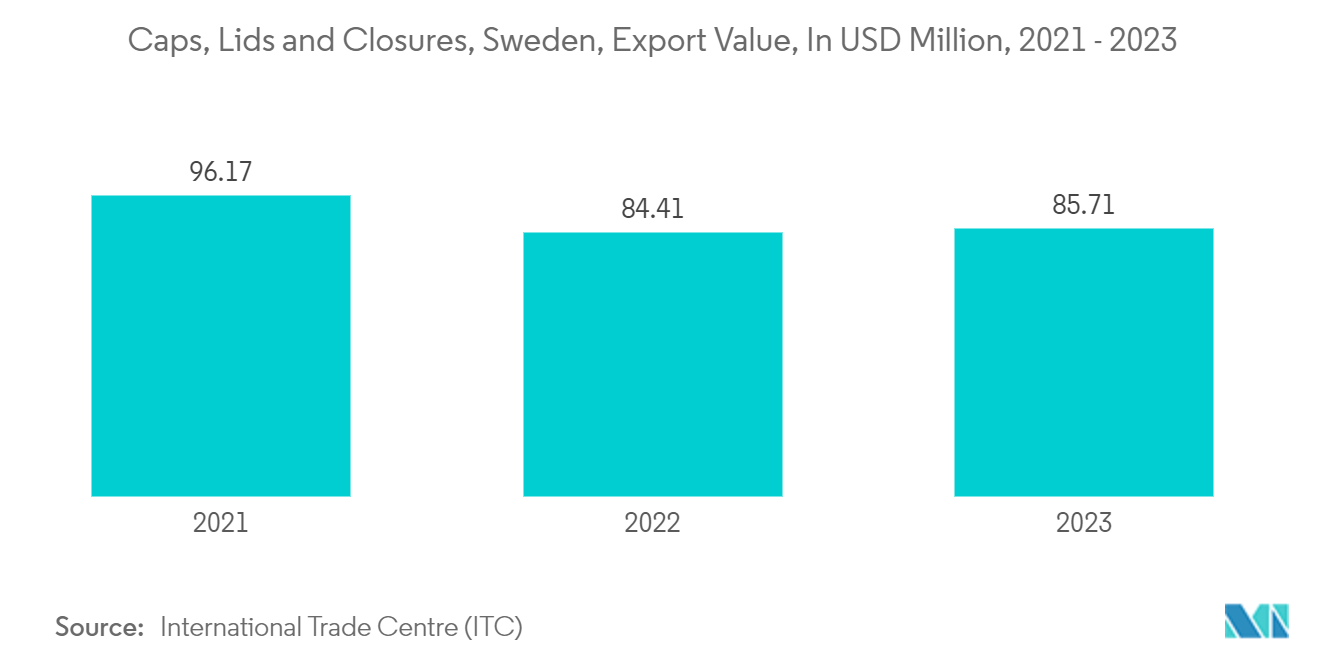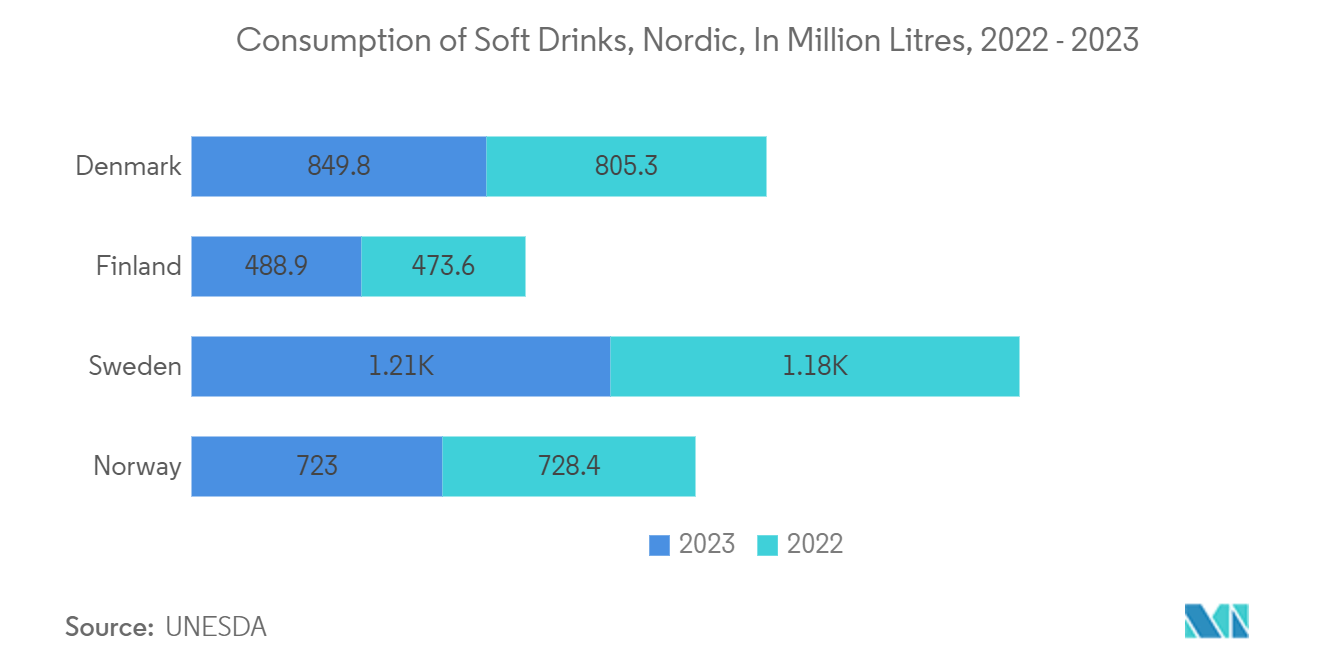Market Trends of Nordic Plastic Caps And Closures Industry
Polypropylene (PP) Segment is Estimated to Have the Largest Market Share
- Polypropylene (PP) material stands out for its superior rigidity, heat, water, and chemical resistance. Unlike PE, PP excels in high-temperature resistance but lags in low-temperature scenarios. Ethylene copolymers, like block PP and random PP, find packaging applications tailored to their specific characteristics. Notably, PP, being widely accessible, reigns as a top choice in the plastic packaging landscape in the Nordic region.
- Polypropylene material maintains its shape well, even when subjected to rough handling, and boasts impressive durability, making it the top pick for cap materials. Its resilience against breakage and bending further cements its appeal. These qualities are poised to drive the increasing adoption of polypropylene (PP) for caps and closures in the Nordic countries in the coming years.
- Manufacturers such as Bericap Holdings GmbH and Berry Global Inc. offer diverse caps and closures in the Nordic region. These include threaded, flip-top, child-resistant, and tamper-evident designs crafted from PE and PP materials and available in various hues and shapes. Notably, these companies prioritize using recycled plastics in their manufacturing processes.
- The surge in exports of lids, caps, and closures from Sweden to key markets like Norway, Germany, and Finland is a significant driver of market growth. Data from the International Trade Centre (ITC) revealed that Sweden's export value for these products rose from USD 84.41 million in 2022 to USD 85.71 million in 2023.

Beverage Segment is Expected to Dominate the Market
- Increasing consumer interest in tourism in Denmark, Sweden, and Finland is bolstering the Nordic region's economic landscape. Official statistics reveal a 22% surge in foreign overnight stays in Norway and an 11% increase in Sweden, attributed to their appealing climates and competitively priced holiday offerings compared to other European destinations. Additionally, the burgeoning food tourism trend in the Nordic region is further propelling market growth.
- Rising disposable incomes, especially in nations such as Sweden and Denmark, and escalating urbanization fuel the need for plastic caps and closures in the beverage sector. Soft drinks, known colloquially as soda or carbonated beverages, hold a prominent position in the non-alcoholic beverage landscape. With ingredients like water, sugar, artificial sweeteners, and flavorings, their broad popularity is poised to bolster the demand for beverage closures in the Nordic region.
- The demand for plastic caps and closures is on the rise in Nordic countries like Denmark, Sweden, Finland, and Norway, driven by the increasing consumption of non-alcoholic beverages, especially soft drinks. These beverages offer various flavors, formats, and packaging, catering to diverse drinking occasions. Data from UNESDA, a European soft drink association, reveals that in 2023, Sweden consumed 1,207.5 million liters of soft drinks, marking a 2.7% increase from the previous year. Similarly, Denmark saw its soft drink consumption climb from 805.3 million liters in 2022 to 849.8 million liters in 2023.


